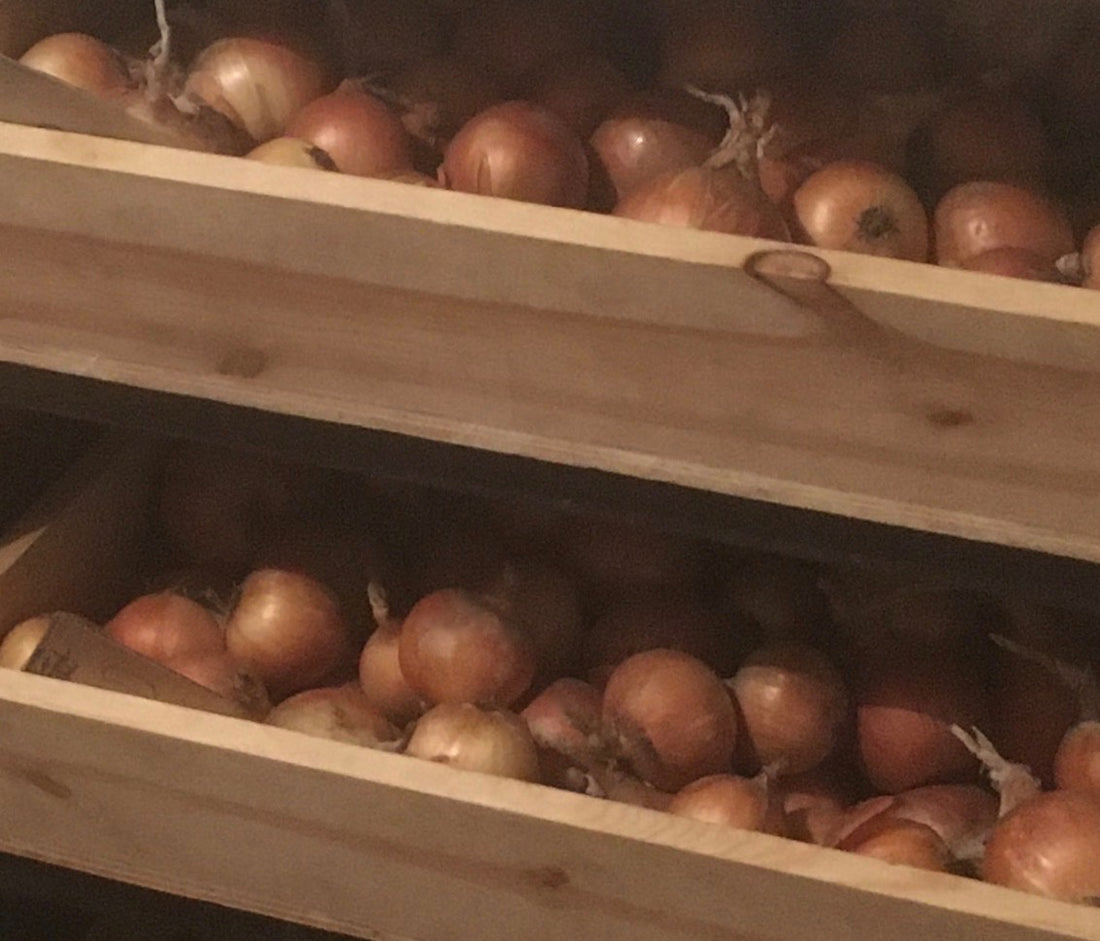
How to store onions for the long winter
Share
Onion varieties differ greatly in their ability to be stored over the winter. Some won’t make it past Christmas and others can hold well into the spring. Onions need to be cured well with the necks tight and dry before putting into storage.
For curing, they can be spread out in a dry, warm airy place, or hung upside down with their tops hanging through slats of something like pallets. We use a homemade rack with triple stacked screens on wheels that can be moved in and out of the garage as needed and kept out of the sun, heat and rain. Here is a picture of the onions on the rack during the curing process.

Onions take three to four weeks to cure before they’re ready for storing. We roll them outside on nice fall days and back in the garage overnight to protect them from dew and any rain or freezing temperatures. Once the onions have dried enough, remove the dry foliage from the top of the bulb, dried roots at the base, and any dirt from the skins. Leave the protective skins intact as much as possible in the cleaning process.
Onion varieties vary a lot in their ability to store over winter. Some don’t make it past Christmas. Others, like Dakota Tears onion, hold well into spring. Dakota Tears onion was bred as a yellow storage onion; they are meant for long-term storage. They have firm, dry bulbs with tight necks and layers of protective skin. Onions are biennials, so the bulbs are planted back in the second year to flower and produce seed. When we select onion bulbs for seed production, we only plant back the bulbs that stayed dormant all winter long. Our goal is to provide a winter storage onion that will keep you in onions year around!
Store the crop in a cool, dry location with good air circulation. Ideal temperatures are between 45 and 55 degrees F. Onions can be stored in the traditional onion bag or in a shallow boxes or bins with newspaper lining. Here’s a picture of our onions in storage!

See the flats marked ‘EAT’ on the top shelf? When we go through our onions preparing them for storage, we select out the bulbs that did not dry down as well or the ones with thicker necks and mark them to be eaten first because they will not store as well.
Here are some additional tips from the National Onion Association:
- Always handle onions with care. Do not drop onions; bruising them will cause them to break down.
- Onions should feel firm and dry, be free of any signs of decay, and should not have any visible sprouting. Some loose skins are normal.
- Do not wrap onions in plastic or store in plastic bags. A lack of air circulation will reduce shelf life.
- Do not store onions with potatoes or other produce items that release moisture.
- Keep onions out of direct sunlight and other heat sources.
May your onions store well!
AND NOW-- here is a link to my favorite French Onion Soup recipe! Enjoy!
Our best to you,
Theresa & Dan
